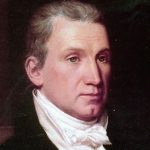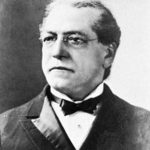Though the actual battle was inconclusive (18 October, 1854), a part of it has entered the lexicon of war myths as strongly as Hastings (1066) or Trafalgar (1805) because of the added refinement of ‘human interest’.
The Battle of Hastings saw the end of Saxon hegemony in Britain, and the beginning of Norman rule under William the Conquerer. But the battle is chiefly remembered because the Saxon leader, Harold, died with an eye pierced and his skull crushed by a war arrow. Trafalgar was an effective and crushing defeat for Napoleon Bonaparte, but it was a sea battle (romantic) fought between three great seafaring nations (England, France and Spain), and during the conflict Horatio Nelson was shot down on his own deck by a French sniper balanced (God knows how) in the high shrouds of an enemy warship (pure Hollywood, except that it happened).
Balaklava was fought during the Crimean War. After their defeat on the River Alma, the Russians withdrew to Sevastopol. The town was then besieged by British, French and Turkish troops, supplied from a base at the small port of Balaklava.
The Russian forces moved down on to the Balaklava plain, where they set up gun emplacements on either side of the valley, as well as a major emplacement at the valley mouth; behind the guns lay their supply depots and infantry.
At the other end of the valley waited a detachment of British cavalry under the command of Lord Lucan. The British commander-in-chief was Lord Raglan, positioned with his headquarters about a mile away from the cavalry position on a hill, from which, using a telescope, he could plainly see the Russian guns in place and ready on the heights on both sides of the plain. Lord Raglan had had a comparatively distinguished military career, but was now elderly and querulous. He was not blessed with a good memory. His junior officers complained that he nearly always referred to their Russian enemies as ‘the French’, perhaps because he had fought in the Napoleonic Wars fifty years before.
Among the cavalry detachments was the Light Brigade, some 673 men mounted on chargers. The Brigade was under the command of a fiery officer called Lord Cardigan. Raglan sent a message in the hands of a young mounted officer to the Light Brigade ‘to prevent the enemy carrying away the guns’. All Raglan’s staff understood this to refer to the Russian guns already mounted on the Vorontsov Heights – but Cardigan (spoiling for a fight as always) took the order to mean a direct frontal attack on the main Russian artillery massed at the other end of the valley.
To the astonishment of the Russian gunners and high command, Cardigan issued orders, and the British cavalry started out at a fast canter to ride the length of the plain at the charge. Horses and men were soon at full gallop, their sabres unsheathed and pointed forward. It was one of the last direct frontal assaults made by cavalry in History. Pandemonium! Shrieking, wounded horses! The Russian guns on both sides of the plain firing down at the six hundred. Cardigan in the lead yelling in hoarse Irish, riding like a chief of the Cheyenne. The crash of the guns! Men and horses dying. Men and horses dead. A Russian general, watching with amazement, commented, “it is glorious! But it is not war!”
Lord Cardigan actually reached the Russian guns with a few troopers, cutting the gunners down with the sabre, and regrouping before charging off again in a disorganised retreat. 247 British cavalrymen died in the Charge, which was utterly useless and served no purpose except perhaps for providing the inspiration to Alfred Lord Tennyson to compose a famous poem called, appropriately enough, ‘The Charge of the Light Brigade!’
The Russians failed to take Balaklava, but they managed to hold on to the Vorontsov Heights, thus cutting off the paved supply road from the port to the besieging allied forces above Sevastopol.










Leave A Comment